CYR61
-
Official Full Name
cysteine-rich, angiogenic inducer, 61 -
Overview
The secreted protein encoded by this gene is growth factor-inducible and promotes the adhesion of endothelial cells. The encoded protein interacts with several integrins and with heparan sulfate proteoglycan. This protein also plays a role in cell proliferation, differentiation, angiogenesis, apoptosis, and extracellular matrix formation. [provided by RefSeq, Sep 2011] -
Synonyms
CYR61;cysteine-rich, angiogenic inducer, 61;CCN1;GIG1;IGFBP10;protein CYR61;IBP-10;IGFBP-10;CCN family member 1;IGF-binding protein 10;cysteine-rich, anigogenic inducer, 61;cysteine-rich heparin-binding protein 61;insulin-like growth factor-binding protein 10
Recombinant Proteins
- Mouse
- Human
- Rat
- Chicken
- Zebrafish
- E.coli
- Yeast
- CHO
- Mammalian Cells
- HEK293
- In Vitro Cell Free System
- His
- GST
- Fc
- Non
- Avi
- SUMO
Background

Fig1. The structure of CCN protein and examples of their binding growth factors/integrins. (Yin Zhu, 2020)
What is CYR61 protein?
CYR61 (also known as CCN1, cellular communication network factor 1) gene is a protein coding gene which situated on the short arm of chromosome 1 at locus 1p22. The secreted protein encoded by this gene is growth factor-inducible and promotes the adhesion of endothelial cells. The encoded protein interacts with several integrins and with heparan sulfate proteoglycan. Cyr61 consists of four domains. There are an IGFBP domain, a VWF type C domain, a TSP type I domain, and a cysteine knot domain. The CYR61 protein is consisted of 381 amino acids and its molecular mass is approximately 42.0 kDa.
What is the function of CYR61 protein?
Cyr61 encoded by the Cyr61 gene is a dynamically expressed, multifunctional matricellular protein and it is also a secreted, extracellular matrix (ECM)-associated signaling protein of the CCN family. The CYR61 protein (also known as CCN family member 1, or CCND1) is a multifunctional extracellular matrix associated protein involved in a variety of signaling pathways and biological processes. It regulates cell proliferation, migration, adhesion, and differentiation primarily by interacting with integrins, growth factor receptors, and other cell surface receptors. CYR61 plays a key role in many physiological and pathological processes, including embryonic development, wound healing, angiogenesis, and tumorigenesis.
CYR61 Related Signaling Pathway
In tumorigenesis, CYR61 can promote cell proliferation and survival by activating signaling pathways such as PI3K/AKT, MAPK/ERK, and Wnt/β-catenin. In addition, CYR61 has been implicated in inflammatory responses and fibrosis, as it regulates cytokine production and extracellular matrix remodeling.
CYR61 Related Diseases
CYR61 has been implicated in a variety of diseases, especially in the occurrence and development of cancer. Studies have shown that CYR61 is overexpressed in many types of cancer, such as breast, lung, stomach, and ovarian cancers. In addition, it has been linked to diseases such as cardiovascular disease, fibrosis and inflammatory responses.
Bioapplications of CYR61
CYR61 protein is also widely used in drug development and detection method development, which provides an important basis for research and application in related fields. In addition, CYR61 protein also plays a role in tissue repair, inflammatory response, cardiovascular disease and bone biology, further promoting its application in the field of medical research.
Case Study
Case study 1: Mami Yokota, 2022
Trehangelins (THG) are newly identified trehalose compounds derived from broth cultures of an endophytic actinomycete, Polymorphospora rubra. THG are known to suppress Cellular Communication Network factor 1 (CCN1), which regulates collagen homeostasis in the dermis. Although the physical properties of THG suggest a high penetration of the stratum corneum, the effect of THG on the epidermis has not been reported. Here the researchers describe a possible mechanism involved in skin aging focusing on the effect of THG on epidermal CCN1.
This study shows that: (1) THG suppress epidermal CCN1 expression by inhibiting the translocation of Yes-Associated Protein (YAP) to nuclei. (2) Epidermal CCN1, localized at the basement membrane, regulates the balance between the growth and differentiation of keratinocytes. (3) Keratinocytes secrete more CCN1 than fibroblasts, which leads to disruption of the basement membrane and extracellular matrix components. (4) The secretion of CCN1 from keratinocytes is increased by ultraviolet B exposure, especially in aged keratinocytes, and deteriorates the elastic fiber structures in the underlying dermis.
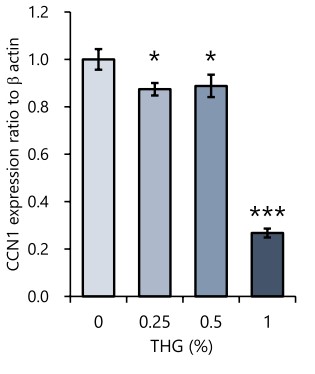
Fig1. Effects of THG on CCN1 expression. The expression of cellular CCN1 from the lysate.
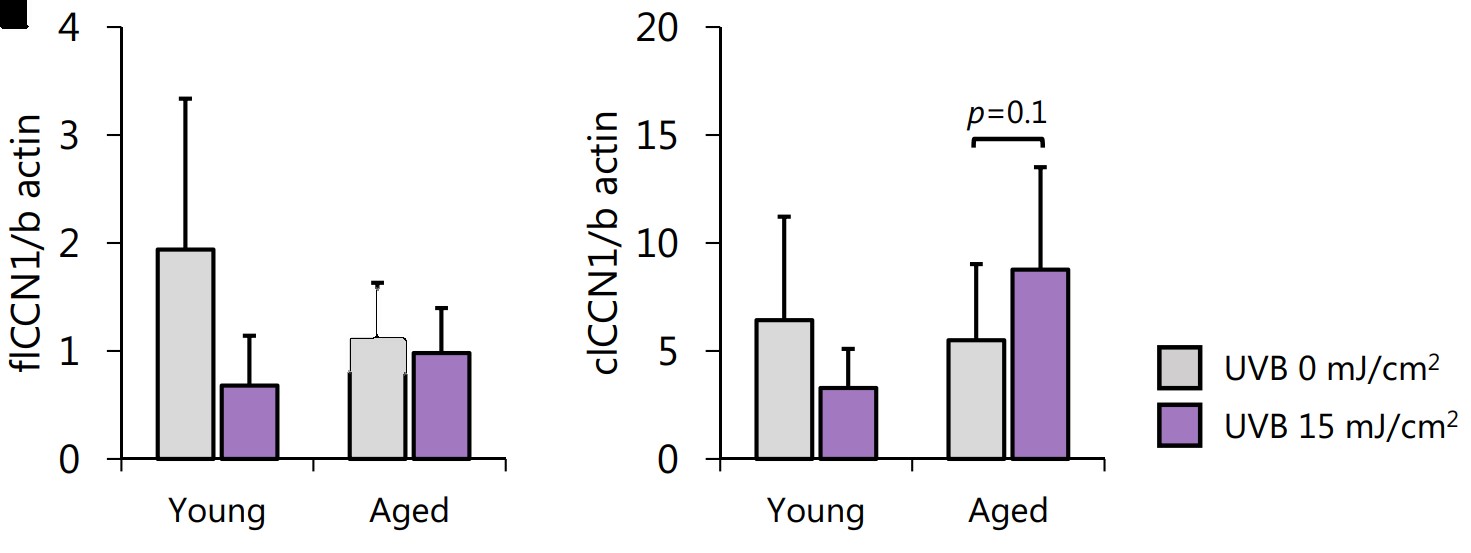
Case study 2: Kelly Ascenção, 2022
Hydrogen sulfide (H2S) is a gaseous endogenous biological mediator, involved in the regulation of cellular bioenergetics, angiogenesis, invasion, and chemotherapeutic resistance in several types of cancer. The current studies were set up to investigate if CBS or 3-MST regulates CyR61 in colon cancer cells in the context of the regulation of proliferation, migration, and survival. The study mainly utilized HCT116 cells, in which two of the principal H2S-producing enzymes, CBS and 3-MST, are highly expressed.
The H2S donor GYY4137 and the polysulfide donor Na2S3 activated the CyR61 promoter in a concentration-dependent fashion. CyR61 was found to play an active, but relatively minor role in maintaining colon cell proliferation. HMPSNE markedly suppressed the secretion/release of CyR61 from the colon cancer cells. Moreover, HMPSNE promoted colon cancer cell apoptosis; endogenously produced CyR61 was found to counteract this effect, at least in part via RhoA activation.
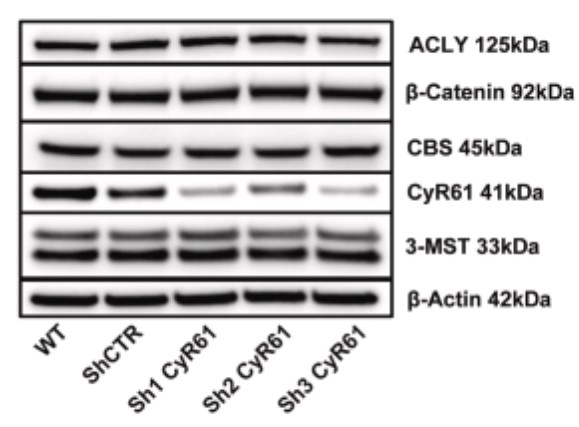
Fig3. Western blot analysis of CyR61, H2S enzymes and Wnt/β-Catenin pathway markers in wild-type HCT116 cells, ShCTR cells (i.e. cells treated with non-coding vector) and three HCT116 cell lines with CyR61 silencing.
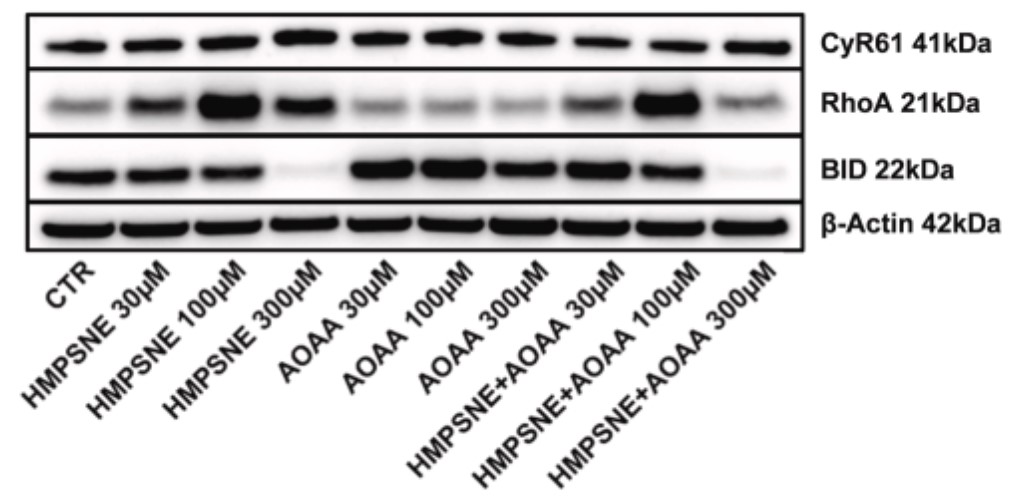
Quality Guarantee
High Purity
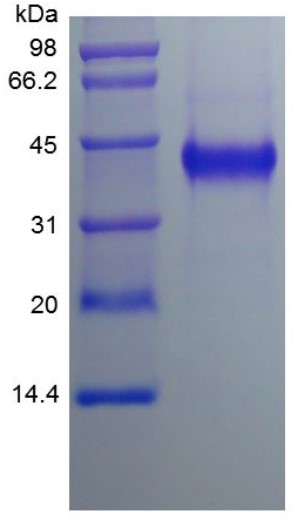
Fig1. SDS-PAGE (CYR61-933H) (PROTOCOL for western blot)
.
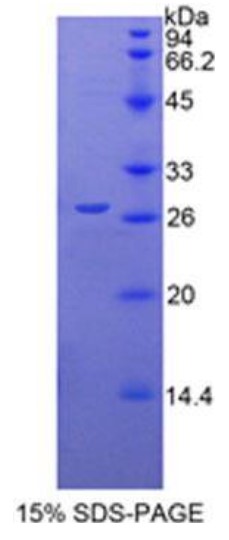
Fig2. SDS-PAGE (Cyr61-4247M) (PROTOCOL for western blot)
Involved Pathway
CYR61 involved in several pathways and played different roles in them. We selected most pathways CYR61 participated on our site, such as Hypertrophy Model,Oncostatin M Signaling Pathway,Regulation of Wnt-mediated beta catenin signaling and target gene transcription, which may be useful for your reference. Also, other proteins which involved in the same pathway with CYR61 were listed below. Creative BioMart supplied nearly all the proteins listed, you can search them on our site.
| Pathway Name | Pathway Related Protein |
|---|---|
| Hypertrophy Model | JUND,WDR1,MYOG,IFRD1,ZEB1B,DUSP14,ADAM10A,ANKRD1,MSTNB,MSTN |
| amb2 Integrin signaling | MST1R,ELANE,MST1,HP,LPA,NIPAL1 |
| Oncostatin M Signaling Pathway | JUND |
| Regulation of Wnt-mediated beta catenin signaling and target gene transcription | CDX4,IGF2BP1,HBP1,ZCCHC12,KRT1,TNIK,TLE4,T,TCF4,TLE1 |
| RhoA signaling pathway | ACTA1,DIAPH1,MKL1 |
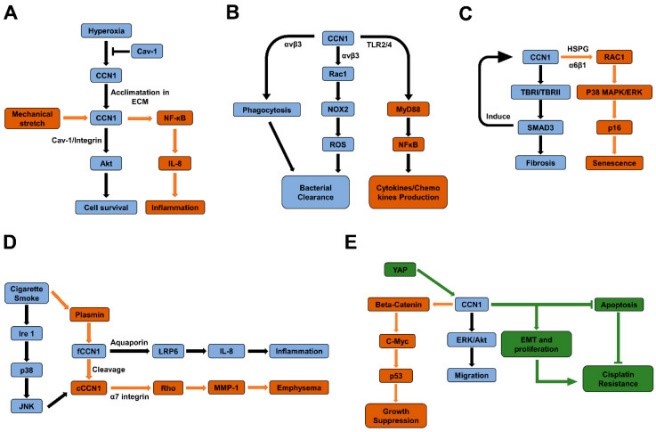
Fig1. Schematic diagrams of signaling pathways mediate the pathogenesis of ALI in lung epithelial cells. (Yin Zhu, 2020)
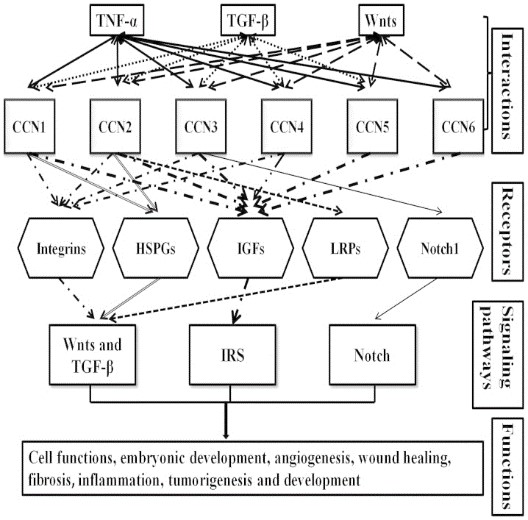
Fig2. CCN protein interactions with receptors and other main cytokines. (Jun Li, 2015)
Protein Function
CYR61 has several biochemical functions, for example, extracellular matrix binding,heparin binding,insulin-like growth factor binding. Some of the functions are cooperated with other proteins, some of the functions could acted by CYR61 itself. We selected most functions CYR61 had, and list some proteins which have the same functions with CYR61. You can find most of the proteins on our site.
| Function | Related Protein |
|---|---|
| insulin-like growth factor binding | NOV,IGF1RB,IGFALS,WISP3,KAZALD2,HTRA1B,IGFBP5A,IGF1RA,KAZALD3,ESM1 |
| integrin binding | CIB2,LAMB1,ICAM5,WISP1B,FN1,NISCH,ADAM22,WISP1,WISP2,ADAMTS8 |
| heparin binding | SOST,APOH,FGFR1A,WISP2,LPA,COMP,BMP7,ZNF146,LIPG,WISP1A |
| extracellular matrix binding | CD248,BGN,VTN,SID4,VEGFA,SPP1,DMP1,GPR56,SPOCK2,ITGAV |
Interacting Protein
CYR61 has direct interactions with proteins and molecules. Those interactions were detected by several methods such as yeast two hybrid, co-IP, pull-down and so on. We selected proteins and molecules interacted with CYR61 here. Most of them are supplied by our site. Hope this information will be useful for your research of CYR61.
ZWINT;Mis12;recB;recN;MYC;CNTROB
Resources
Research Area
Related Services
Related Products
References
- Park, YS; Hwang, S; et al. CCN1 Secreted by Tonsil-Derived Mesenchymal Stem Cells Promotes Endothelial Cell Angiogenesis via Integrin alpha(v)beta(3) and AMPK. JOURNAL OF CELLULAR PHYSIOLOGY 230:140-149(2015).
- Chen, CY; Su, CM; et al. CCN1 Induces Oncostatin M Production in Osteoblasts via Integrin-Dependent Signal Pathways. PLOS ONE 9:-(2014).



